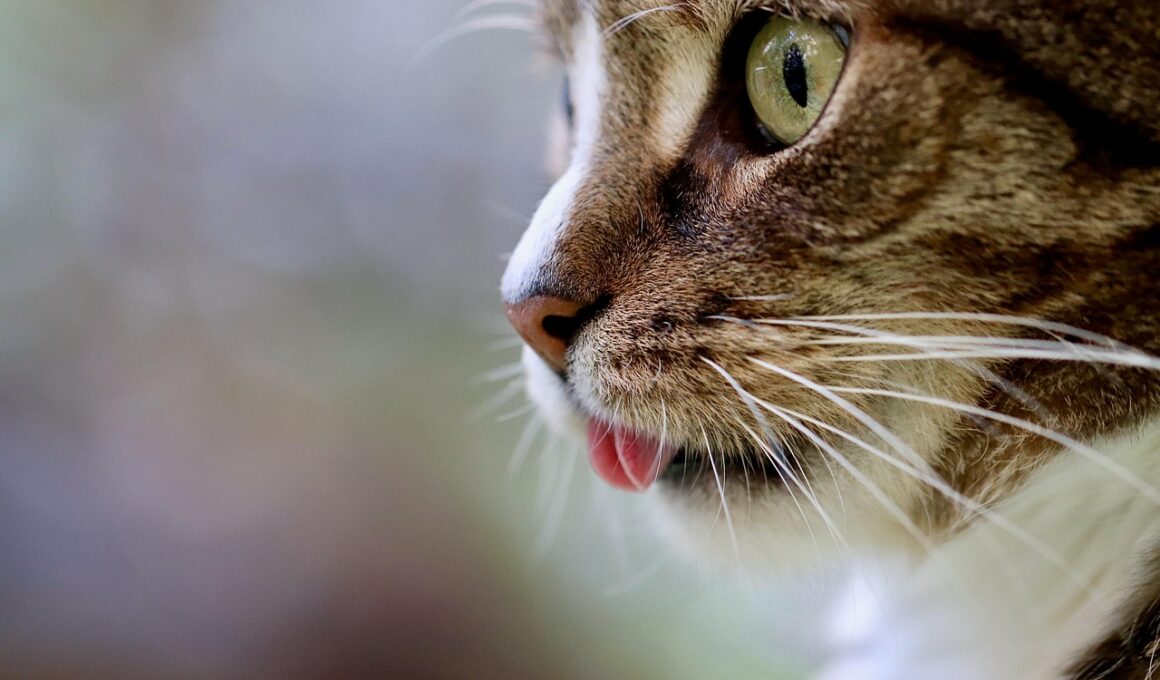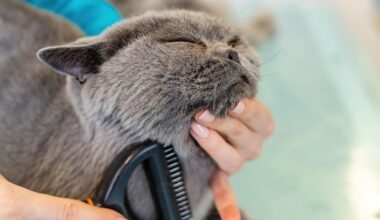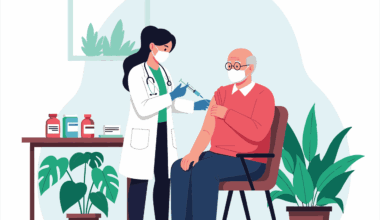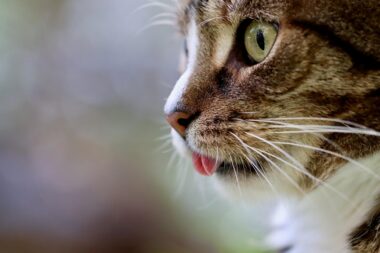The Impact of Automation in Veterinary Vaccination Practices for Cats
In recent years, automation in veterinary practices, especially in the domain of cat vaccinations, has seen impressive advancements. These innovations enhance efficiency, ensure accurate record-keeping, and improve the overall quality of care for felines. Implementing automated systems allows clinics to track vaccination schedules seamlessly and eliminate human errors. With the advent of advanced technologies, veterinary teams can access a comprehensive and real-time view of each cat’s health. Digital platforms streamline communication between clients and veterinary staff, reducing appointment scheduling challenges. Automated reminders encourage pet owners to adhere to vaccination timelines, ultimately increasing compliance rates. Furthermore, automation enables more productive use of veterinary staff’s time, as they can focus on direct patient care instead of administrative tasks. The financial implications are significant, potentially resulting in reduced operational costs. Embracing automation not only benefits the veterinary practices but fosters a culture of proactive and preventive care for cats. As more clinics adopt these systems, we may soon witness a transformation in vaccination practices for felines, leading to healthier pets and peace of mind for their owners. Automation is clearly reshaping how vaccines are managed and administered.
Benefits of Automated Vaccination Systems
Automated vaccination management systems provide several advantages for feline veterinary practices. First and foremost, these systems streamline the overall vaccination process, ensuring that each pet receives appropriate immunizations on time. By leveraging technology, veterinarians can effortlessly track vaccination histories, appointments, and reminders. Clients benefit from timely notifications, which alleviate the stress associated with tracking their cat’s vaccination schedule. Another significant advantage is the reduction of human error during record-keeping. Automated systems minimize the chances of accidentally mismatching a vaccine with a patient, thus enhancing safety. Data accuracy is paramount in devising appropriate vaccination strategies for each cat. Additionally, automation enhances workflow efficiency, allowing veterinary staff to allocate more time to critical patient interactions. In effect, pets receive heightened attention, guidance, and education from veterinary professionals. Moreover, the integration of telehealth has flourished alongside these automated systems, enabling remote consultations for scheduling vaccinations or discussing concerns. Overall, these benefits result in happier pets and more satisfied owners, fostering stronger relationships with veterinary clinics. Automation proves itself a powerful ally in not just improving efficiency but fostering a culture of animal welfare.
To ensure that feline vaccination practices keep pace with modern requirements, veterinarians must maintain up-to-date information. Automated systems facilitate the consistent dissemination of knowledge regarding vaccination protocols, regulatory changes, and guidelines. With the continuous evolution of technology, veterinary professionals have easy access to updated resources and research. This allows them to make informed decisions about vaccinations tailored to each cat’s needs. Additionally, many automated vaccination programs integrate robust educational components, helping pet owners understand the importance of vaccinations for cats. Such education fosters a collaborative relationship between clients and veterinary clinics. Veterinary teams can utilize these systems to educate clients about the side effects and benefits of vaccinations, addressing any hesitations pet owners might have regarding immunization. Furthermore, this increased transparency encourages a culture of preventative care, where owners feel empowered to take proactive steps to protect their pets’ health. Enhanced communication through automation not only strengthens bonds between pet owners and clinic staff but nurtures a more informed community. As veterinarians continually educate themselves and their clients, the overall health of feline populations will undoubtedly improve, ultimately benefiting every stakeholder involved.
Challenges in Implementation
Despite the numerous advantages of automated cat vaccination systems, some challenges remain in their implementation. Initial costs of developing and integrating such systems can pose a barrier for many veterinary clinics, particularly smaller practices with limited budgets. Financial constraints can limit investment in software, hardware, and staff training initiatives. Some veterinary teams may feel overwhelmed by the prospect of incorporating new technologies into their daily routines. Resistance to change is a common issue that clinics often face, making it crucial for practice leaders to foster a culture of openness towards innovation. Moreover, the availability of reliable internet connectivity impacts the efficiency of automated systems; clinics in rural or underdeveloped areas may experience disruptions that hinder access to essential data. Ensuring proper data security is another key concern. As veterinary practices adopt automated systems, safeguarding sensitive client and patient information becomes paramount. Addressing these challenges requires a collaborative effort involving industry stakeholders to develop affordable solutions and offer robust training programs. Overcoming these hurdles enables veterinary practices to fully harness the potential that automation holds in revolutionizing cat vaccination management.
Successful automation of cat vaccination practices hinges on effective collaboration amongst veterinary professionals, staff, and clients. Building a solid support network is vital for smooth transitions into technologically advanced systems. Veterinary clinics can form partnerships with technology providers that specialize in animal healthcare, ensuring that best practices and tailored solutions are implemented. End-user feedback during system implementation greatly impacts its acceptance; clinics should actively seek input from both staff and clients throughout the process. Training and ongoing support are critical, helping to reinforce staff confidence in using new technologies. Engaging clients in the adaptation process encourages them to participate and helps alleviate any apprehensions. Offering educational workshops on new systems can empower pet owners, making them hopeful about treatment efficiency. As vaccination schedules evolve and adapt to new technologies, following best practices retains a sense of continuity and reliability for pet owners. Veterinary educators can also promote collaboration among peers to share successful experiences and strategies, thus widening the collective knowledge pool. As practices strengthen these collaborative efforts, the future of feline vaccination management will flourish, ultimately enhancing feline health and wellness outcomes.
Future Outlook for Cat Vaccination Management
The future of cat vaccination management is poised for remarkable changes driven by automation and technology. As artificial intelligence (AI) continues to evolve, we can expect even greater advancements in personalized vaccinations and tailored healthcare plans. Predictive analytics will offer insights linked to optimal vaccination timing and dosages based on unique health profiles. With machine learning, these systems will further refine recommendations to boost overall effectiveness in keeping cats healthy and safe from diseases. Integrating wearables or health monitoring devices could enhance our understanding of a cat’s response to vaccines, making real-time adjustments possible. Moreover, telemedicine will likely become increasingly prominent, allowing remote consultations with veterinary professionals. This could help owners better understand symptoms of adverse reactions and provide timely intervention. Furthermore, the advancement of cloud technology will facilitate a universal platform sharing assessment data and vaccination records seamlessly across veterinary practices. Such interconnectedness opens doors for research collaborations and enhances the creation of standardized vaccination protocols. Ultimately, the convergence of technology and veterinary care will lead to better health outcomes for cats and strengthen client-veterinarian relationships.)},{
In conclusion, the impact of automation on veterinary vaccination practices for cats shows great promise in revolutionizing how vaccinations are managed. From enhancing efficiency to enabling better communication between veterinarians and pet owners, the benefits of these systems are vast. Moving forward, embracing technological advancements will be crucial for ensuring that cats receive timely and effective vaccinations while minimizing risk factors. As the industry continues to evolve, collaboration among veterinary professionals, technology providers, and clients will be vital in overcoming existing challenges. Education will remain an integral component in driving adoption and acceptance of automated systems. Through sustained efforts, the veterinary field can position itself to meet the health needs of cats and their owners in a technologically advanced future. Overall, the future outlook for cat vaccination management appears bright, as soon-to-be integrated platforms promise not only remarkable efficiency but also improved understanding of feline health. Such advancements foster an environment in which proactive measures will thrive, consequently cultivating a devoted commitment to the wellness of our feline companions. In the broader scope, these efforts ensure that veterinary practices remain at the forefront of innovation in animal health.)
Conclusion
Ultimately, the implementation of automated systems in cat vaccination management transforms the way veterinarians deliver care. As veterinary practices evolve, embracing these technological advancements will lead to further enhancements in efficiency, pet health, and client satisfaction. While some challenges exist, these difficulties can be mitigated through appropriate collaboration and education within the veterinary community. By prioritizing the well-being of cats and fostering support networks, clinics will thrive. Veterinary professionals must remain dedicated to refining their skills and expanding their knowledge, ensuring that they can navigate the ever-changing landscape of medical technology confidently. Such dedication to innovation will reinforce the vital role veterinarians play in safeguarding the health of feline patients. As each challenge brings opportunities for growth, the future remains promising. Embracing the positive impact of automation can yield rewarding experiences for veterinarians, clients, and, more importantly, the beloved cats that depend on their care. This collaborative journey toward a technology-driven future holds the potential to redefine how we view pet healthcare, ultimately redefining the relationship between cats, their owners, and veterinary services.





